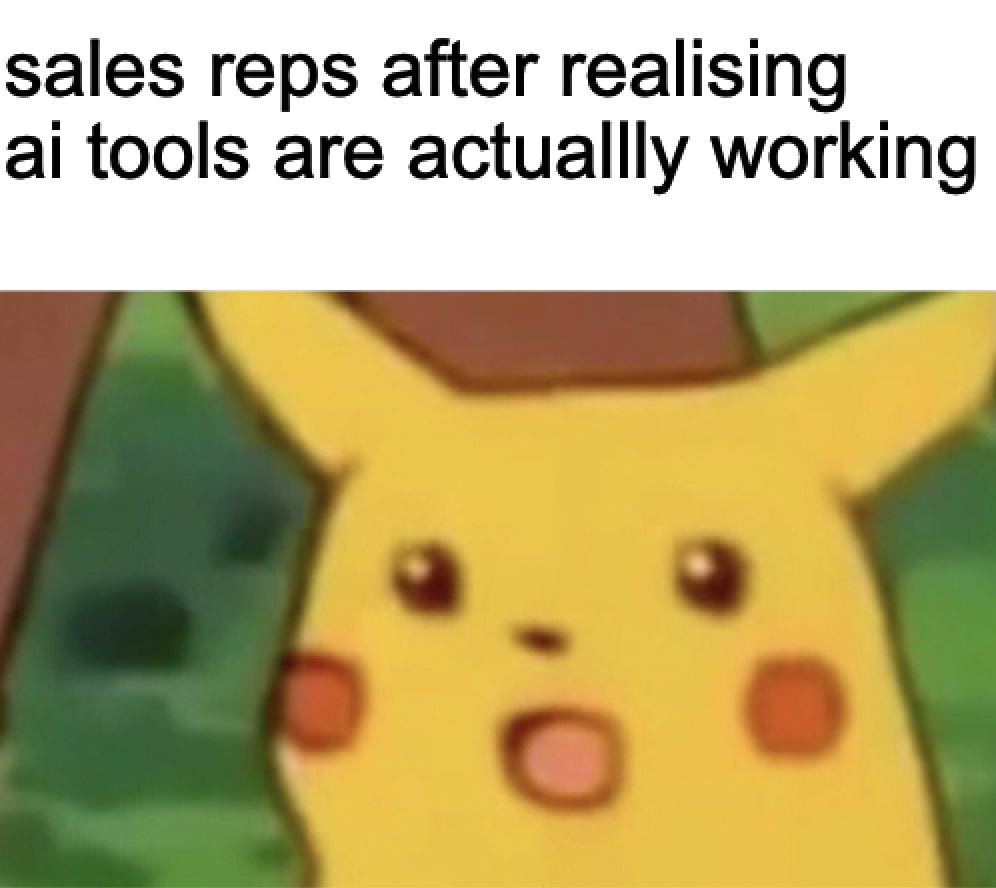
You've invested in cutting-edge AI sales enablement technology. Your team has the best tools money can buy. But three months later, adoption rates are abysmal, and sellers are back to their old habits. Sound familiar?
If you're nodding your head, you're not alone. According to Venkat Nagaswamy, Chief Revenue Officer at Splashtop and former McKinsey consultant, the root cause isn't the technology – it's human psychology. In our recent conversation, Venkat shared his proven framework for getting teams to actually use new tools, drawing from his experience as an early AI adopter who founded MarianaIQ in 2013.
In this article, we will analyze the psychology behind AI adoption resistance and reveal Venkat's five-step framework that flips the script from forced implementation to organic growth.
Most organizations approach AI sales coaching and AI roleplay tools with the same mindset they use for rolling out new CRM systems or updating company policies. They push from the top down, expecting immediate compliance and adoption. But here's what Venkat discovered: this approach triggers psychological resistance that virtually guarantees failure.
"The root cause isn't the technology. It's human psychology," Venkat explains.

When leadership pushes new tools from the top, sales reps immediately feel evaluated rather than supported. They see the new AI sales coach as another way for management to monitor and judge their performance, not as a tool designed to help them succeed.
This creates a perfect storm of resistance. Reps can't see immediate benefits to their daily work, training feels like punishment, and they naturally gravitate back to methods that feel safer and more familiar. The result? Expensive AI enablement tools sitting unused while your team struggles with the same old challenges.
Rather than forcing adoption, Venkat's approach uses influence and psychology to create natural momentum. His five-step framework has helped numerous organizations successfully implement AI in sales without the typical resistance and abandonment issues.
The first step requires a fundamental mindset shift. Instead of positioning AI tools as monitoring devices, present them as enablement solutions that solve immediate pain points.
Wrong approach: "This AI sales coaching platform will help us track your performance."
Right approach: "This AI coach will handle your post-call summaries so you can focus on selling."
The psychology behind this is simple: people avoid pain more than they seek success. When you show immediate relief from daily frustrations, adoption becomes a no-brainer. Your sales reps want tools that make their lives easier, not harder.
This is particularly important when introducing AI roleplay features. Don't lead with how it will help managers evaluate performance. Instead, emphasize how it gives reps a safe space to practice handling sales objections before they're on a real call with a potential client.
One of the most common mistakes is rolling out AI sales enablement tools to the entire team at once. This creates chaos, overwhelms your support resources, and dilutes the success stories that drive organic adoption.
Venkat recommends targeting the right people first:
Interestingly, Venkat advises skipping your top performers initially. "They already have their system," he explains. "They're less likely to adopt something new because what they're doing is already working." Save them for later when you have clear success stories to share.
This is where the rubber meets the road. Your chosen early adopters need to see obvious, immediate benefits, or they'll abandon the tool just like everyone else.
Venkat shares a perfect example from his own experience: "We built ChatGPT prompts for prospect research. The result? Reps save 30 minutes before each call. The benefit was so obvious they couldn't ignore it."

The key is making the win immediate and measurable. With AI roleplay tools, this might mean:
Quick wins create momentum. When reps see immediate value, they become advocates who naturally share their success with colleagues. This peer-to-peer influence is far more powerful than top-down mandates.
"We need to create an environment where people don't feel the evaluative nature of coaching," Venkat emphasizes.
This step is crucial for AI sales coaching adoption because it directly addresses the fear factor that kills most implementations.
Creating psychological safety means:
This is especially important for AI roleplay features. Sales reps need to feel safe practicing with the AI buyer without worrying that their mistakes will be used against them in performance reviews. When they trust that the AI sales coach is there to help them improve, not evaluate them, adoption rates skyrocket.
The final step is about social proof and concrete outcomes. Don't talk about what the AI can do; talk about what it has done for specific people on your team.
Wrong approach: "This AI tool has great capabilities for sales roleplay."
Right approach: "Sarah used this AI coach and closed 2 extra deals this month because she was better prepared for objections."
Show specific, measurable outcomes:
When other reps see their colleagues succeeding with concrete results, they want in. This creates the organic spread that sustainable adoption requires.
Even with the best intentions, many organizations sabotage their AI sales enablement efforts. Here are the most common pitfalls Venkat sees:
Rolling out to the entire team at once: This overwhelms everyone and prevents you from creating focused success stories.
Leading with features instead of benefits: Nobody cares about technical capabilities. They care about solving their daily problems.
Making it feel like evaluation: The moment reps think you're watching them more closely, resistance increases dramatically.
No one-on-one support during transition: Group training feels impersonal and doesn't address individual concerns.
Expecting instant adoption across all skill levels: Different reps need different approaches and timelines.
When you implement Venkat's psychology-first approach, something interesting happens. The AI tools don't just get adopted – they become integral to your team's success. Sales reps start asking for more AI roleplay scenarios. They request additional features. They become advocates who help with implementation for new team members.
This organic growth is the holy grail of technology adoption. Instead of fighting resistance, you're riding a wave of enthusiasm. Instead of monitoring usage metrics, you're managing requests for expanded access.
The key insight is that sustainable AI adoption in sales isn't about the technology at all. It's about understanding human psychology and working with it, not against it. When you focus on immediate pain relief, psychological safety, and peer influence, even the most skeptical sales teams become AI advocates.
The difference between successful AI sales enablement and expensive shelf-ware isn't the sophistication of the technology – it's the sophistication of the implementation strategy. Venkat's five-step framework proves that when you flip from evaluation to enablement, start small with motivated reps, create immediate wins, build psychological safety, and demonstrate real value, AI adoption becomes natural and sustainable.
Remember: your sales reps want to succeed. They want tools that make them better at their jobs. When you position AI roleplay and AI sales coaching as partners in their success rather than monitoring systems, you unlock the full potential of your investment.
The next time you're rolling out new AI tools, resist the urge to mandate adoption. Instead, use psychology to create pull, not push. Your adoption rates – and your team's performance – will thank you.
In this episode of SellMeThisPen Podcast, Michael and Venkat dive deep into the psychology of AI adoption in sales teams. They discuss why most AI implementations fail, how to overcome natural resistance to new technology, and practical strategies for getting your team to actually use the tools you invest in.
Venkat Nagaswamy is the Chief Revenue Officer at Splashtop and a former McKinsey consultant who has held leadership roles at Mitel and 8x8. As an early adopter of AI in business, he founded MarianaIQ in 2013 to apply deep learning to marketing. His proven framework for AI adoption has helped numerous organizations successfully implement new technologies without the typical resistance and abandonment issues.